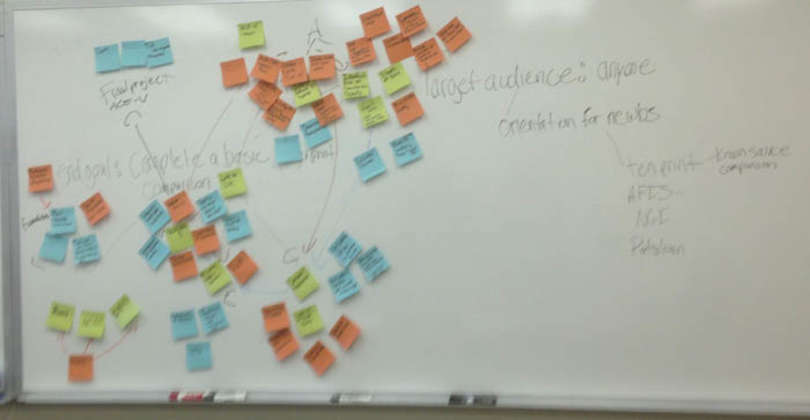So this week, I am starting a new elearning project at work and with the help of a super-supportive supervisor and a fellow IDS, I decided to use a different approach that was a combination of Cathy Moore’s action-mapping and a SAM-type rapid prototyping model. The results are in: I love, love, love the results! Here’s why:
Stuff that’s awesome:

Quick process and get right to the good stuff: For starters, the action-mapping process really did only take about two-hours (a little less when you factor in the cold-weather fire drill we suffered through). I had to push the SME just a little bit to turn the focus away from what the users needed to understand to what they needed to do, but once we got on that path, the process went very smoothly.
Discover the problems (fast!): Another awesome benefit of the process was all the things that we discovered in this first day that we may a. have never questioned during our previous process or b. have not found out until two (or more) months down the road after storyboarding in isolation, long after we lost our direct connection with the SME. Case-in-point, going in, we were prepped that this needed to be a certification-type course that would prepare users to sit for an exam that would certify them in identification (fingerprinting). When we focused first thing on the target audience and then on the end goal, it became very clear that this needed to be a basic, 101, entry level course targeted at people who wanted to test the waters and explore whether latent print examination was even a path that they wanted to go down. A far cry from the type of people ready to be prepped for an exam! Another thing that we discovered as we explored our rapid, uber-ugly prototypes with the SME was that one area that we thought should be included, a particular fingerprint classification system, was actually something that we could chuck, mostly because it isn’t in use by contemporary latent print examiners and secondly, because to actually make the classification system useful, we would have to make a deep dive into it that would take us way off course (pun intended). I can only imagine what might have happened with the old content-centered approach where we created an outline then went back to our offices, storyboarded, and then called the SME wondering how to make these classification systems relevant. In short, it would have been a colossal waste of time.
Visualize the results: Last, the rapid prototyping gave us as the instructional designers (and one-stop graphic designers, programmers, and everything else, too) a way to visualize the interactions. It also allowed the SME to give us invaluable suggestions on the best, most relevant, most realistic way to simulate real-life activities.
Stuff I’m not so sure about.
Because it can’t all be wedding cake, right?
Selling the hard sell: First thing I have to admit is that we have a really receptive SME on this project (and a supportive project manager) so, though I think there is a little concern because this is unlike what they’ve seen before, they’ve both been flexible and working with us. I am interested (terrified?) of what the process might be like with a harder-sell that might want to push back on being content-centric. I suppose it would just take a little more time and a little more finesse. The other thing I’d be interested to know is how well this process would work with face-to-face courses. My inclination is that it would still work because it would still have the benefits of starting and ending with performance in mind and leaning out the course to include only the content that drives performance. Protyping would be a different animal though. What are your experiences with a more rapid development models? What worked? What didn’t?